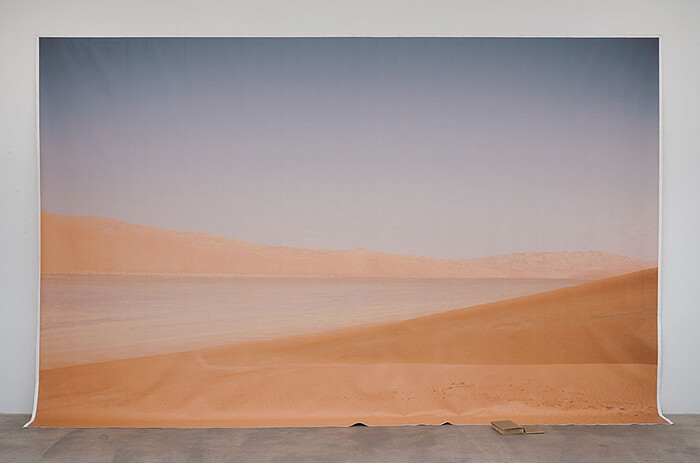Categories
Subjects
Authors
Artists
Venues
Locations
Calendar
Filter
Done
June 11, 2014 – Review
Frances Stark’s “Bobby Jesus’s Alma Mater”
Jonathan Griffin

About three years ago, something unexpected happened in Frances Stark’s art. After two decades of making work about herself—about her anxieties and obsessions, her identity crises and motivational struggles—she started making work about other people. Stranger still, her subjects became, in most instances, young men of color.
Stark’s current exhibition “Bobby Jesus’s Alma Mater” features a body of work begun in 2012 when a young Hispanic man by the name of Bobby—a friend of a man she met at her son’s skate park in Los Angeles—became her unlikely muse. Around the same time she was becoming disillusioned with her job as tenured professor at the University of Southern California’s Roski School of Art and Design. Her frustration turned to outrage in 2013 when the university announced that the school would be subsumed by the new 70 million dollar Academy of Arts, Technology and the Business of Innovation, funded by music producer Dr. Dre and his business partner Jimmy Iovine. Stark vented her anger in a major and widely acclaimed video installation, Bobby Jesus’s Alma Mater b/w Reading the Book of David and/or Paying Attention is Free (2013), which she first showed at the 2013 Carnegie International in Pittsburgh. The video introduced …
April 12, 2013 – Review
Guido van der Werve
Andrew Berardini

I’m just about to cry when he goes and does something ridiculous.
My weepiness is more a wet testament to my propensity to weep than it is in the weepworthiness of whatever I’m watching, which in this case is Guido van der Werve in his latest film, Nummer veertien, home (2012). On this mission, van der Werve again experiments with how much dour Dutch Romanticism one can pour into epically beautiful tableaux and heartbreaking musical scores before it’s too much. When his pathos threatens to foam over into self-serious kitsch, he does something silly. Pathos turns bathos with a dollop of self-aware slapstick. The second doesn’t exactly cancel out the first but it certainly cuts the froth. It’s as if the artist is self-conscious of the oppressive seriousness of it all and is trying to throw us a bone.
Most of his previous films (numbered chronologically two through thirteen in untranslated Dutch) mix the sublime with the ludicrous. High art forms are played in unusual places: a piano and orchestra float on separate barges in a picturesque river or ballerinas prance in the street. These are usually mixed with some deadpan comedy, the artist getting smeared by a car right before the …
September 15, 2011 – Review
Amalia Pica’s "Endymion’s Journey"
Joanna Fiduccia

When the term “romantic conceptualism” reached its apotheosis several years ago, the touchstone appeared, almost unanimously, to be Bas Jan Ader’s I’m Too Sad to Tell You (1971). Gushing affect, it also self-reflexively performed the romantic artist’s predicament: the subjectivity romanticism gives license to profess proves, alas, incommunicable. Consistently and even compulsively concerned with failures of communication, Amalia Pica takes little pains to hide romantic tendencies in her recent exhibition “Endymion’s Journey.” The journey in question is the voyage made by a copy of John Keats’s narrative poem Endymion in the charge of explorer Joseph Ritchie, who promised the English poet that he would cast the edition “into the heart of the Sahara.” True to his word, the book was lost in the desert—but so, unfortunately, was Ritchie. Pica relates this tale on a placard posted beside a billboard-size backdrop of a desert vista; splayed open at its feet, a weathered copy of Endymion lies where Pica flung it during the opening (the first time as tragedy, the second as farce, indeed).
Endymion was poorly received when Keats published it, and Pica’s work smartly parlays that critical failure into the poignancy of—literally—losing one’s audience. Offsetting this pathos are whimsical “catachrestic” …